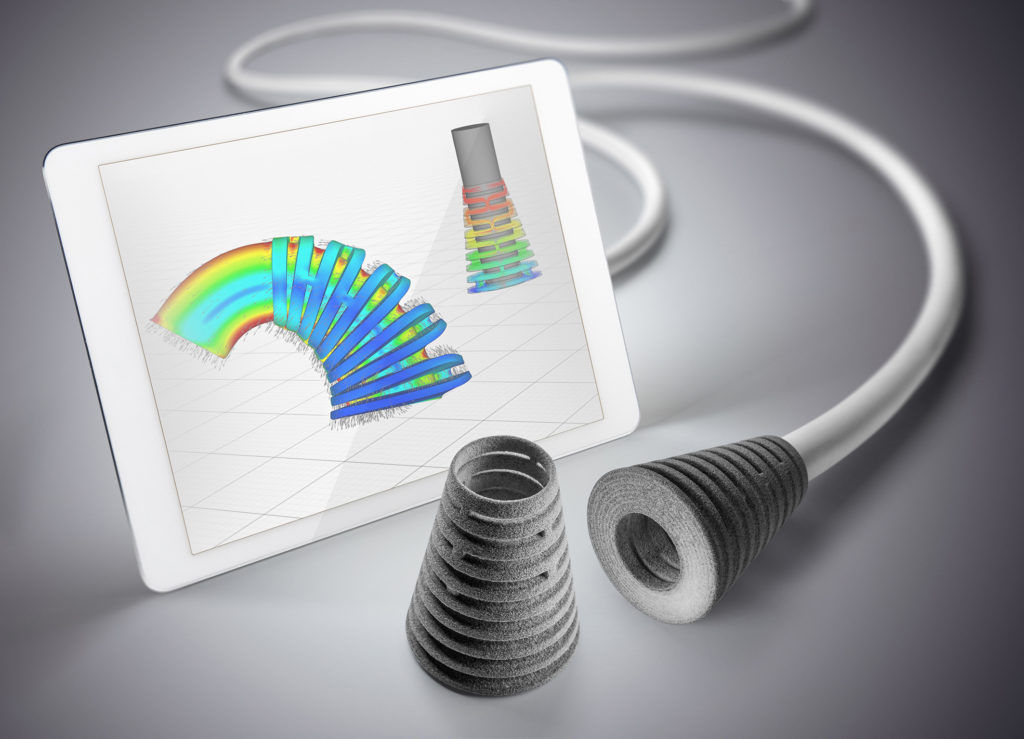BASF announced that it has expanded the application range of its simulation tool Ultrasim. As of now, the CAE tool also calculates component concepts based on elastomers, especially Elastollan, BASF’s thermoplastic polyurethane. According to the company, the simulation covers the entire process chain from initial processing to the mechanical properties of the final product. Among the special features of the simulation are options to simulate both the initial load and cyclic loads of a component.
The property profile of elastomers typically includes stress softening (Mullins effect) under cyclic loading. For reliable simulation results, the consideration of this material behaviour is indispensable. Ultrasim is said to allow the precise description of stress softening during a cyclic course of loading. However, the simulation usually starts in the stage of initial processing, delivering an exact forecast of the warpage behaviour during injection moulding, considering the complex visco-elastic behaviour of the material. The simulation is now available for several Elastollan grades. Further grades are currently in the characterisation process, said BASF.

“The simulation tool Ultrasim provides our customers with quick and reliable information about how BASF materials behave in their planned components, during production as well as at a later stage during service life. Customers who apply Ultrasim instead of constructing prototypes or carrying out tests can significantly shorten their development times. This simulation support is now also available for Elastollan”, said Achim Besser, Team Leader Material Modelling in BASF’s Performance Materials division. According to BASF, it is the first material producer offering such wide-ranging simulation services in the TPU sector.
Elastollan is used in automotive parts such as strain relief sleeves on electric connectors, spring isolators at the axles, folding bellows and end stops for shock absorbers. In interior parts, door handles and gear knobs are produced with TPU. Beyond that, the material is frequently employed in the consumer goods sector: application examples include ski boots, shoe soles and cable sheathings.
